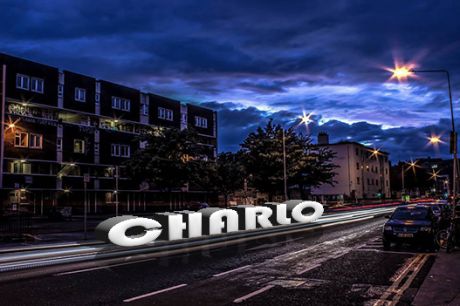The Gentrification Of Charlemont Street P.I
 dublin |
anti-capitalism |
news report
dublin |
anti-capitalism |
news report  Monday March 24, 2014 01:34
Monday March 24, 2014 01:34 by Nico
by Nico
The term ‘gentrification’ was coined in 1964 by sociologist – Ruth Glass. She defined it as a change in the social structure and housing market in working class areas. She explained – "One by one, many of the working class quarters have been invaded by the middle class - upper and lower ... Once this process of 'gentrification' starts in a district it goes on rapidly until all or most of the working class occupiers are displaced and the whole social character of the district is changed" (Glass, 1964, p.xvii).
Predominately a working class neighbourhood, Charlemont Street had witnessed some drastic changes down through the years. At one time they were host to some of the worst tenement slums in Dublin, revolutionary Marxist, James Connolly, resided there for a short while. Charlotte Street, recently destroyed, used to be an ancient road that led directly to the Battle of Rathmines in 1649. In later years it housed many working class families.
Long after the slums had since gone, and Charlotte Street wiped from the face of the planet, new and modern buildings started springing up from where the old tenement houses once stood. This quick change from antiquated to contemporary was the signalling precursor for the beginning of what was to become the unyielding gentrification process of Charlemont Street.
Dubbed the 'Millionaires Quarter' for reasons I will now outline below, Harcourt Street, Adilade Road, Iveagh Court, and Charlemont Street, all fall within this section of big business, and corporate elite. Central Bank has one of its offices there, and many other financial enterprises also occupy the district. Two Luas stations are both situated within a 3 minute walk in either direction from Tom Kelly flats, and a Star Bucks also sits neatly on the corner. A new Hotel overlooks the canal surrounded by new massive office spaces on all sides. And all are within a stones throw away from each other, in this playground for the rich, hence its nom de guerre.
Sitting smack bang in the middle of this once proud working class part of Dublin, now a mainly central business district, lies Charlemont Street and Tom Kelly Flats; where some of the last remaining remnants of the labouring class from the entire area now live.
In the early 90's, property developer Sean Reilly, of Alcove Properties, paid just under £4m for a one-acre plot at the top of Harcourt Street and Charlemont Street.
Reilly's planning application consisted of “150,000 sq ft new seven-storey commercial office building comprising 30,000 sq ft on Harcourt Street, as well as a six-storey extension of about 12,000 sq ft to the Iveagh Court building with a realigned front entrance”.
It wasn't long before Reilly set up shop and commenced work on over 100 new private apartments, and a new major office space.
But even before any work had started, negotiations were well under way with the residents in Charlemont Street and Tom Kelly Flats, and Reilly's spokespeople, and DCC. In what way were the new buildings going to affect the residents lives, for better or worse, was the point of argument from the residents at hand.
Some issues raised by the concerned locals were about how the levels of dust, dirt and debris, travelling from the site into the complex, would affect them? How would the noise pollution from any work being carried out, such as drilling, and deliveries coming in and out at all ours, also affect them? Would any employment be available for Charlemont Streets largely unemployed population? Why should the residents have to suffer intolerably as their lives are disrupted, their neighbours displaced, their street transformed forever, and forced then to live beside a construction site for the duration of its build, right across the road from their homes. What was in it for them? Those were some of the very reasonable questions asked.
Reassuring the residents, Reilly's spokespeople responded by expressing that all their concerns would be taking on board, and that the issues raised would not be a problem once construction had begun. Also offered by Reilly at the time were full time jobs for the locals in the construction industry, and a promise of new job growth for the area once construction was completed. Some of the residents living in the front Blocks that were closest to the building site, received small amounts of compensation that amounted little to nothing, as soon as the full scale of things finally unfurled.
Despite all the residents concerns, they might as well have been living on the construction site for its entire duration. For months on end, they were unable to hang out clothes to dry because of the dirt and dust that hung on the air, and clung to everything like a magnet to a fridge. They were unable to sleep at night because of the noise pollution from late night deliveries and workers on overtime. The flats complex was littered with debris. And people were left feeling the pinch after hardly any jobs were giving to any of the locals as promised, unemployment remained pretty much at the same rate as before and after the buildings were built.
Once construction commenced and the last remaining Georgian working class homes were levelled to the ground, all the promises to the residents Reilly made previously, were broken. Working class homes were soon replaced by sterile office blocks, and middle-class-filled private apartments, thus changing the whole social structure of Charlemont Street, and with that, sealing the fate of peoples lives, forever.
The entire area had been completely hemmed in.
The gentrifiers had made their mark!
Part II coming soon...
